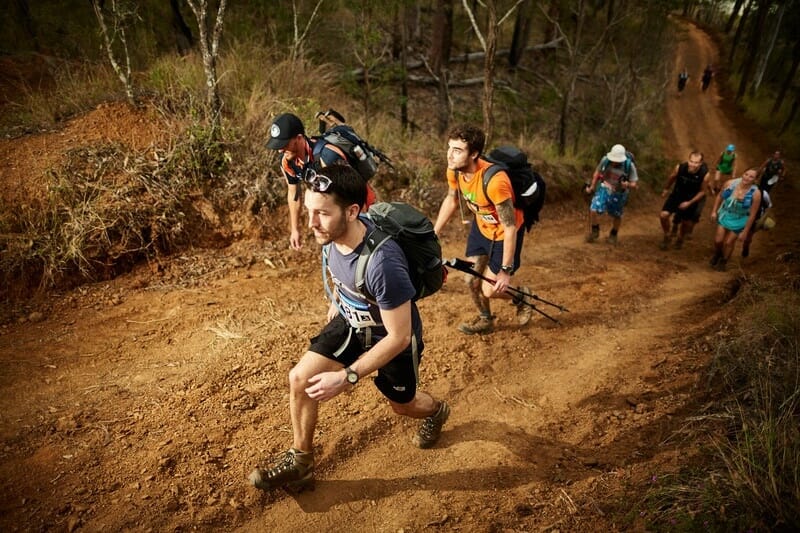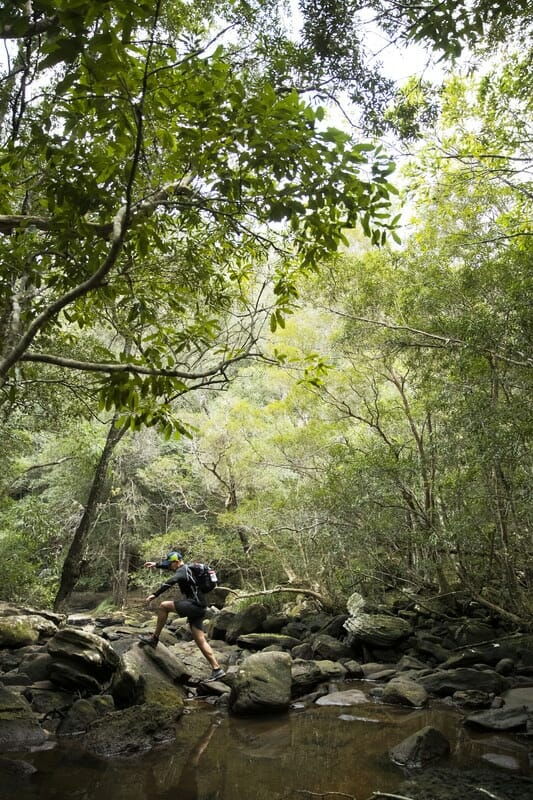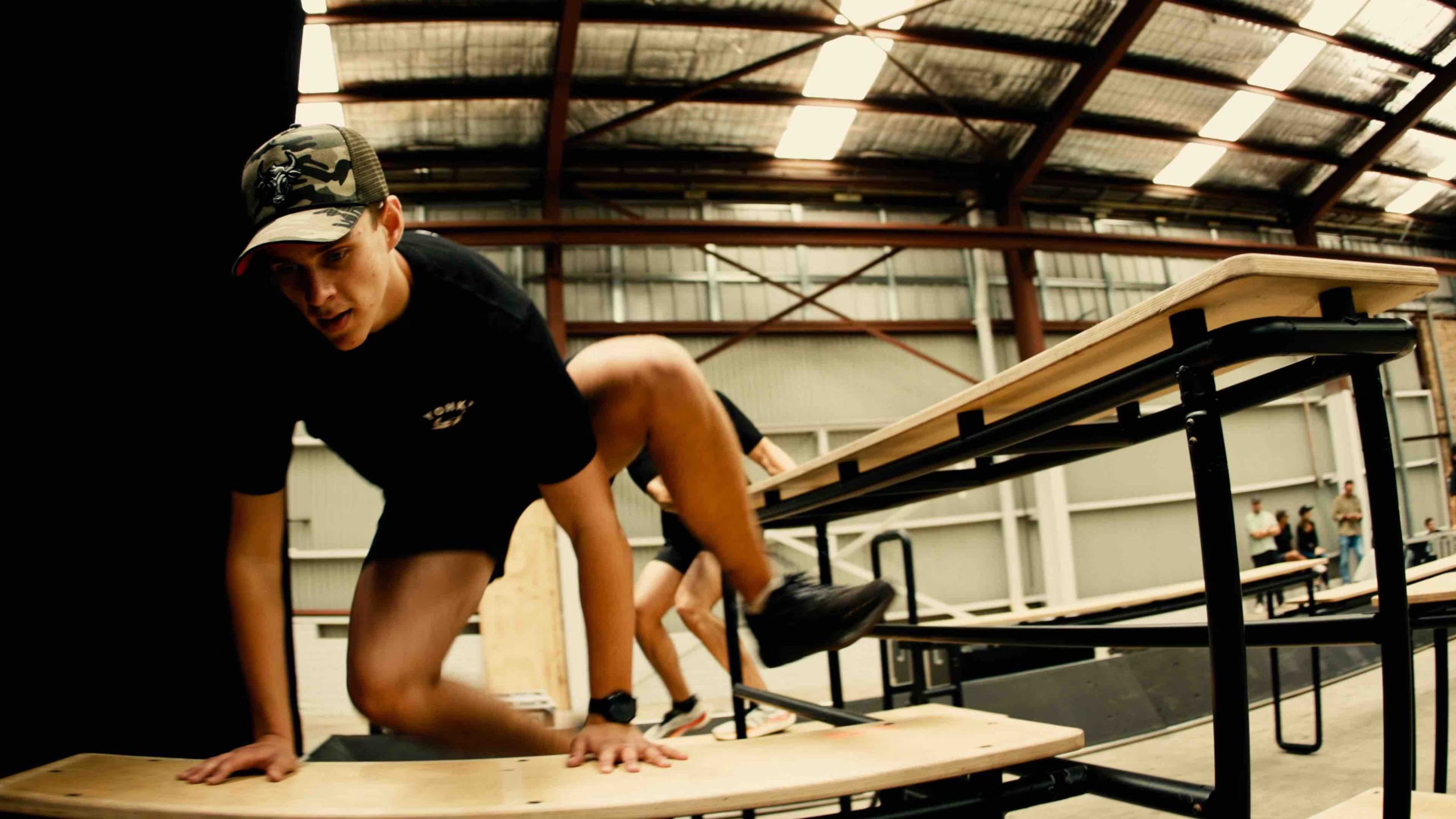8 fitness benefits of hitting the trail—from a leaner, stronger physique to bulletproofing your body.
You don’t have to be a hardcore ultramarathoner like Ryan Sandes or Kilian Jornet to enjoy the incredible benefits of hitting the trails. Whether it’s a smooth gravel path, a dirt trail winding through the woods, or even a woodchip-covered route, running off-road offers a whole different experience for your body compared to pounding the pavement or logging miles on a treadmill.

Think about it: when you’re out on the trails, every step you take is like a mini adventure for your muscles, tendons, and ligaments. It’s not just about putting one foot in front of the other; it’s about navigating uneven terrain, dodging roots and rocks, and adapting to changes in elevation. And let me tell you, all that action is like a full-body workout on steroids.
Take uphill runs, for example. Sure, they might leave you huffing and puffing, but they also sculpt those quads, glutes, and calves like nothing else. Your legs are like pistons, driving you forward with every step, and the extra effort required to conquer those inclines pays off big time in terms of strength and definition.
But it’s not just about the uphill battle; downhill runs are where the real magic happens for your body. As you navigate those descents, your quads kick into high gear to control your speed and prevent you from careening out of control. It’s like a high-intensity leg workout disguised as a scenic trail run.
And let’s not forget about your core. Trail running isn’t just about moving forward; it’s about staying balanced and stable on unpredictable terrain. Every twist and turn requires your core muscles to kick in and keep you upright, which means you’re getting an ab workout without even hitting the gym.
But trail running’s benefits go beyond muscle strength. It’s also about improving balance and proprioception—your body’s ability to sense where it is in space. When constantly adjusting to uneven surfaces and unexpected obstacles, your proprioceptive skills get a serious workout, which can translate to better performance in all kinds of sports and activities.
Of course, like any new fitness endeavour, it’s important to ease into trail running gradually. Start with smoother, easier trails to give your muscles and joints time to adapt, and gradually work your way up to more technical terrain as your confidence and strength grow.
Now, if you need extra motivation to lace up those trail shoes, think about what running off-road can do for your body. We’re talking about stronger quads, glutes, and calves, more stable joints and connective tissue, and a heart pumping stronger than ever. Plus, because trails offer a softer surface than roads or treadmills, you’ll put less stress on your joints with every step, so you can go harder and longer without worrying about injury.
And here’s a little bonus: studies have shown that trail running can torch up to 10% more calories than running on roads. Combine that with all the other benefits, and you have a recipe for a leaner, healthier, happier you.
So, next time you’re looking for a workout that’s as good for your body as it is for your soul, skip the gym and head for the trails. Your muscles, joints, and heart will thank you.
For more inspiration, check out these 8 parts of your body that trail running can transform:
Improves Core
The very nature of trails—soft, forgiving surfaces, sometimes riddled with obstacles like roots or rocks—requires you to engage your core muscles for stability. Each step you take works to tighten and strengthen your core.
Builds Quads
Running on trails, downhill, in particular, builds strength and definition in your quadriceps. Your quads are the brakes that keep you from spiralling downhill too fast.
Strengthens Glutes
Running uphill engages your glute muscles for power. Negotiating singletrack and trail obstacles recruit your glutes for lateral stability.
Calves
Hilly terrain and/or running on technical trails work your calves—they propel you. Every step that requires stability on the trail (basically, every step) starts with muscles in your feet and heads straight to your lower leg.
Connective Tissue
Due to the constant need to stabilize on a trail—adjusting to softer surfaces, finding your way around obstacles—your connective tissue gets strengthened with each step. That means the ligaments and tendons around ankle, knee, and hip joints become increasingly strong—and less prone to injury—when you run trails.
Joints
The softer surface of trails, from grass and beach sand to even hard-packed dirt, is more forgiving than pavement. It compresses with each step. The trail’s “give” eases the impact on your joints and also makes you stronger.
Heart
Because of all that natural give, your engine has to work harder on trails. Trail running’s constant variety increases your cardiovascular endurance differently than running a steady road or treadmill.
Overall Physique
Research shows that running on trails can burn 10% more calories than running on roads. Combined with the previous seven benefits, this makes for a stronger, leaner, healthier you.




